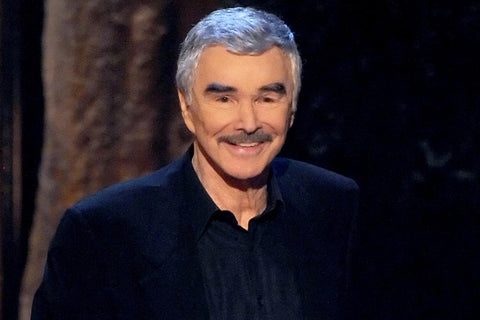The Centrefold that Went Down in History

Actor Burt Reynolds died yesterday at the age of 82. Well known for his long acting career in dozens of wildly popular movies, it was one very famous picture of him that many remember most. In 1972, upon the invitation of Helen Gurley Brown herself, he appeared in a nude centrefold in Cosmopolitan Magazine.
If you've read my blog, you know that I'm not a huge fan of Cosmo. In this day and age, Cosmo magazine is best known for the 'sex tips' that dominate the bylines on its covers - which are repetitive, often comical, and sometimes flat-out dangerous.
But when Helen Gurley Brown, its long-standing editor in chief, died a few years ago, I did some research on the history of Cosmo and found out that when it comes to Cosmo magazine, there is more than meets the eye. And Burt Reynolds is a pretty big part of that history.
That centrefold, appearing when it did, in the magazine that it did, was a BIG DEAL! At that time, it simply wasn't done. One did not see naked pictures of men in mainstream magazines, especially very famous men. Women? Yes, PlayBoy magazine was already in its heyday by that time. But men? No.
However complicated my feelings about Cosmo magazine and the entire issue of how female and male bodies are represented and consumed in media might be, I do love Gurley Brown's stated motives in creating that centrefold. She said that while there are lots of publications that showed naked women, there is nothing for women who want to see men. Women, she thought, like to look at naked men too - she boldly declared that she certainly did. The only difference was that no one talked about it. She wanted to talk about it.
I have to respect this. Men and women are, at the heart of it, so very similar. Yet the cultural expectations of them are so very different. I am with Gurley Brown on this one. Why should naked pictures of women be normal, acceptable, and widely available, and naked picture of men not?
The outcome seems to have proved her right. The issue far outsold any previous issue and spurred Cosmo onto even bigger circulation numbers. It also inspired PlayGirl magazine, which started publication only one year later. Yes, apparently there were a lot of women who wanted to look at pictures of naked men.
It was a bold move for Gurley Brown. Yes, she profited greatly but she also took a risk. She didn't know for certain how people would react. There could have been a major backlash. She had already turned Cosmo from a struggling failure into a thriving success. She didn't need to pull risky publicity stunts. I believe this was much more than a publicity stunt for Gurley Brown. I think she wanted to show that women are not so different from men; that they have their own sexual desires and interests, and there is absolutely nothing wrong with being open and honest about them. She wanted women to have the same opportunities as men - even the ability to look at nude pictures. By putting it in a mainstream publication like Cosmo, she was making a pretty bold statement, and making a salacious picture (although tame by today's standards) available to women in a way it wouldn't have been at the time.
Sadly, Reynolds felt it wasn't so positive for him. He said on many occasions that he regretted doing the photo. He said that he simply thought it would be fun and did not anticipate the kinds of reactions it would provoke. His movie Deliverance came out that year. He felt that the publicity about the centrefold interfered with the perception of him as a serious actor and may have cost him an oscar nomination for that movie.
Generally, famous men suffer far fewer and less dire consequences for the appearance of their naked bodies in media, than do famous women, but I would not argue with Reynold's own perception of his life and career. This only emphasizes that our culture has trouble seeing someone, of any gender, as a sexual person and taking them seriously as a professional at the same time.
I am sorry that the photo may not have done for Reynold's what it did for Cosmo. It certainly gave him a huge publicity boost, but possibly not in ways that he would have preferred. It was, however, an important moment in North American cultural history. Reynolds said that he was not intending to make a feminist statement. Whether he intended it or not, the photo, in that magazine at that time, certainly did make a statement. It went far beyond a picture to represent so much about how our perceptions of men and women, our expectations about gender roles, and our values around sex and sexuality were changing. Perhaps perhaps Gurley Brown used Reynolds to make that statement. And maybe he didn't get the type of appreciation he would have wanted for that. But I certainly appreciate it.
That centrefold is one of the things Reynolds is most remembered for. I hope that we can remember the centrefold, and his feelings about it, and his entire career, of which that photo was only one very small part, altogether, with kindness and respect.

